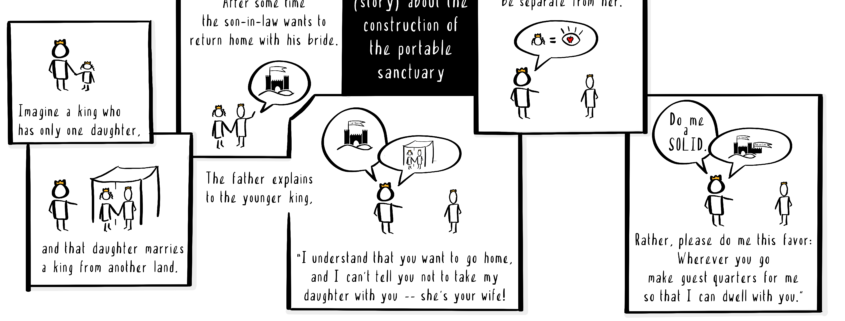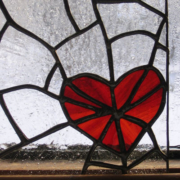Building Sacred Spaces With (and For) G-d
 Part of a yearlong series on Torah’s wisdom about building and builders in Jewish spiritual life.
Part of a yearlong series on Torah’s wisdom about building and builders in Jewish spiritual life.
Jewish tradition teaches that G-d is constantly recreating this world, building something out of nothing. The fact that we are here right now testifies, in this very moment, to G-d’s intention for us to be here.
By contrast, when we build something, we are simply making something out of something else. We are really just taking things that have already existed — like trees, stones, and other elements — and changing their form into buildings and furniture. As a result, we can walk away from our creations, and they continue to exist without us. However if G-d were to stop thinking about us for even a second, we would cease to exist like we were never here.
In this week’s parsha, Tetzaveh, we read, “I will abide among the Israelites, and I will be their G-d. And they shall know that I Adonai am their G-d, who brought them out from the land of Egypt that I might abide among them, I, Adonai, their G-d.” (Exodus 29:45-46) Everything we do in Jewish life comes with this reminder: G-d dwells within us and among us. We build a space for G-d in order to be reminded Who liberated us from the Narrow Place, and Who liberates us even now.
G-d is continually building this world for us. In return, we’re called to build places for G-d, reminders of the One Who liberates us from constriction. And when we do build those places, we need to truly accommodate the needs of G-d’s creations.
There is a beautiful midrash about the construction of the portable sanctuary, the mishkan. Imagine a king who has only one daughter, and that daughter marries a king from another land. After some time the son-in-law wants to return home with his bride.
The father explains to the younger king, “I understand that you want to go home, and I can’t tell you not to take my daughter with you — she’s your wife! But she’s my only daughter, and I can’t bear to be separate from her. Rather, please do me this favor: wherever you go make guest quarters for me so that I can dwell with you.”
So too G-d said to Israel, “I’ve given you the Torah. I can’t tell you not to take it — it’s yours now. But I can’t bear to be separated from it. Rather, every place that you go, make me a home where I can live. As it is said: ‘Build for Me a sanctuary’…”
The Zohar expands “sanctuary” beyond just the mishkan to mean any sacred space. “How beloved are we by G-d that in every place where we are found, G-d’s presence is among us, as it says, ‘build for me a sanctuary and I will dwell among them;’ all spaces where people gather are called a sanctuary.”
Often the spaces where we gather aren’t really sanctuaries, though. They may not be accessible on a physical level. And even when they are ADA-compliant, they may exclude people for emotional, intellectual, and / or spiritual reasons. Too often, some of G-d’s children are excluded, unwelcomed, and suppressed — often in the false name of making these spaces “welcoming” for G-d.
The Talmud teaches that “It is greater to invite guests than it is to greet the Divine Presence.” Welcoming each other, in all that we are, is more important even than welcoming G-d’s own Presence into our midst! The tradition teaches that G-d is like a Parent who experiences pleasure when their children get along, not when we create ostensibly “G-d-focused” events while excluding any of G-d’s children… whether that means excluding people on the basis of gender expression or sexual orientation, or on the basis of race, or because of what form of Judaism they practice.
Indeed, excluding each other from community is the senseless hatred that (tradition teaches) caused G-d’s Temple to be destroyed 2,000 years ago. The Talmud teaches that although G-d no longer (since the Temple’s destruction) has a physical address, we can still seek and find G-d in the four cubits of halakha (Jewish law). We can still seek and find G-d in the open space that’s contained within the scaffolding of tradition, law, and interpretation.
Last week’s Torah portion called us to build for G-d a sanctuary that G-d might dwell within and among us. This week’s Torah portion links that building with our core story of liberation, reminding us that we must build our holy spaces both literal and metaphorical — we must build the Jewish future — with constant remembrance of the One Who brings us forth from narrow places.
Torah offers us Divine specifications for supporting sacred space, and when we follow those instructions we become co-creators with G-d. G-d builds the world for us, and in return we build holy space for G-d. G-d liberates us from Egypt, and in return we are called to liberate others from small-mindedness and exclusion.
The holy scaffolding that we provide for our communities requires our renewed and constant involvement, like G-d’s renewed and constant involvement in keeping the world turning. We must expand and reconfigure our sanctuaries to protect, inspire, and nourish the evolving needs of the Jewish people. If we don’t, then G-d doesn’t have a place to live with us, and none of us can truly be free.


By Rabbi Mike Moskowitz. Sketchnote by Steve Silbert.










Trackbacks & Pingbacks
[…] Building Sacred Spaces With (and For) G-d […]
Comments are closed.